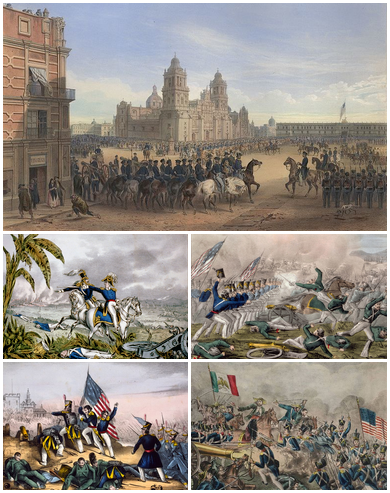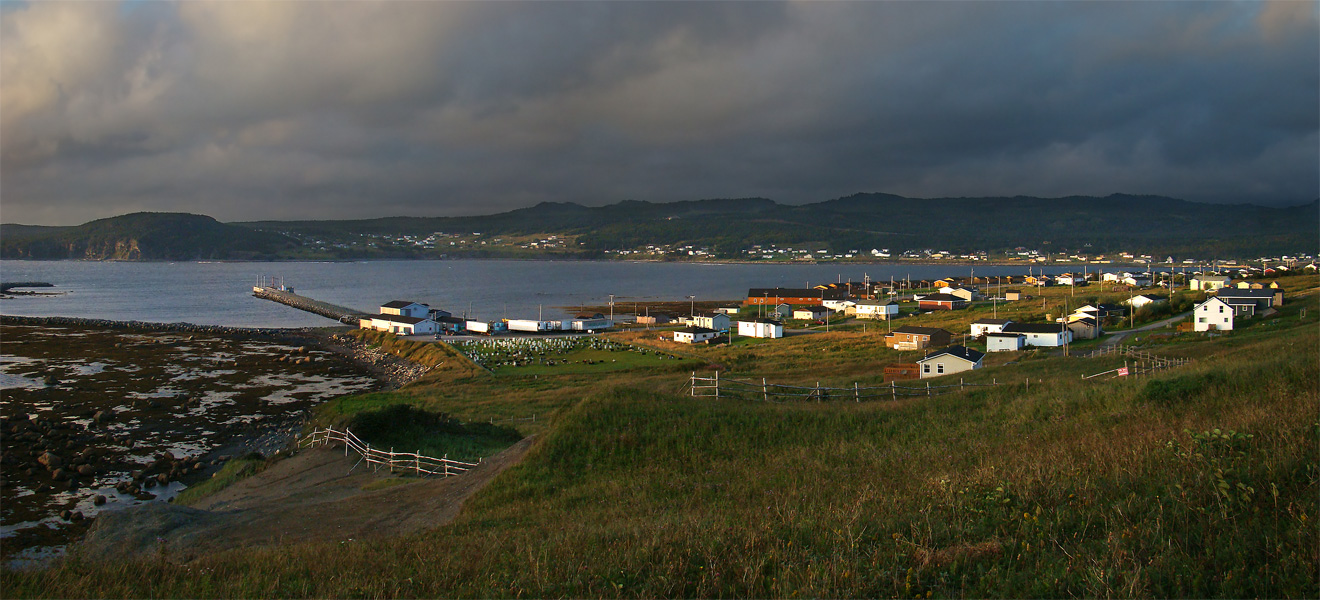|
Mattie Mitchell
Mattie Mitchell (June 1846 – 1922; some sources use the first name Matty) was a Mi’kmaq chieftain, guide, prospector, and explorer who contributed to the development of the Newfoundland economy. Mitchell has been described as "the greatest and most resourceful woodsman who ever lived." For this, Mitchell was recognized as a Person of National Historic Significance in 2001. Biography Mitchell was born in Halls Bay in June 1846. On 26 May 1879, he was married to Mary Ann Webb at Sandy Point. On the marriage certificate his name is transcribed as 'Matthieu Michel (Indien)'. Together they had a son, also named Mattie (Matty) Michell. In 1885, the family moved to Bonne Bay, where he lived the remainder of his life. In 1904, Mitchell was hired to chart the Great Northern Peninsula, working under H. C. Thomson. His extensive knowledge of waterways and other geographical features culminated in the first map drawings of the region. In 1905, Mitchell, while contracted by the Anglo-N ... [...More Info...] [...Related Items...] OR: [Wikipedia] [Google] [Baidu] |
Halls Bay
Halls Bay (also spelled Hall's Bay and Hall Bay in the historical record) is a natural bay located near the Baie Verte Peninsula of the island of Newfoundland, in the Canadian province of Newfoundland and Labrador. Halls Bay has been the determining point for the northern route of the Newfoundland Railway and then the location of the Trans-Canada Highway and is commonly referred to as the Halls Bay Line. Communities located in Halls Bay are; Springdale, South Brook and Port Anson. The Bay is believed to be named after a Captain Hall, who may have established a colonial settlement there in the 1820s to prosecute the local salmon fishery. A local legend claims Hall may have lost his head there in a conflict with Indigenous people, but historians of the same period disputed this. Notable people Mattie Mitchell Mattie Mitchell (June 1846 – 1922; some sources use the first name Matty) was a Mi’kmaq chieftain, guide, prospector, and explorer who contributed to the development ... [...More Info...] [...Related Items...] OR: [Wikipedia] [Google] [Baidu] |
Gerry Byrne (politician)
Gerry Byrne, (born September 27, 1966) is a Canadian politician who was a Liberal Member of Parliament from 1996 to 2015 representing Humber—St. Barbe—Baie Verte, Newfoundland and Labrador, and a cabinet minister in the government of Jean Chrétien. Since the 2015 provincial election, he has served as MHA for Corner Brook. Byrne served in provincial cabinet during the Ball government and is currently Minister of Fisheries, Forestry, and Agriculture in the Furey government. Education Byrne received a Bachelor of Science in environmental science from Dalhousie University. Federal politics Byrne was a Member of Parliament from 1996-2015 when he won a by-election in the province of Newfoundland and Labrador to succeed Brian Tobin. Tobin resigned to run in the 1996 Newfoundland provincial election for Premier. He was re-elected in the 1997, 2000, 2004, 2006, 2008, and 2011 elections. In the 2006 election he had one of the highest margins of victory in Atlantic Canada. ... [...More Info...] [...Related Items...] OR: [Wikipedia] [Google] [Baidu] |
History Of Newfoundland And Labrador
The province of Newfoundland and Labrador covers the period from habitation by Archaic period in North America, Archaic peoples thousands of years ago to the present day. Prior to European colonization, the lands encompassing present-day Newfoundland and Labrador were inhabited for millennia by different groups of indigenous peoples of Canada, Indigenous peoples. The first brief European contact with Newfoundland and Labrador came around 1000 AD when the Vikings briefly settled in L'Anse aux Meadows. In 1497, European explorers and fishermen from England, Portugal, Spain (mainly Basque people, Basques), France and Holland began exploration. Fishing expeditions came seasonally; the first small permanent settlements appeared around 1630. Catholic-Protestant religious tensions were high but mellowed after 1860. The British colony voted against joining Canada in 1869 and became an independent dominion in 1907. After the economy collapsed in the 1930s, responsible government was sus ... [...More Info...] [...Related Items...] OR: [Wikipedia] [Google] [Baidu] |
19th-century First Nations People
The 19th century began on 1 January 1801 (represented by the Roman numerals MDCCCI), and ended on 31 December 1900 (MCM). It was the 9th century of the 2nd millennium. It was characterized by vast social upheaval. Slavery was abolished in much of Europe and the Americas. The First Industrial Revolution, though it began in the late 18th century, expanded beyond its British homeland for the first time during the 19th century, particularly remaking the economies and societies of the Low Countries, France, the Rhineland, Northern Italy, and the Northeastern United States. A few decades later, the Second Industrial Revolution led to ever more massive urbanization and much higher levels of productivity, profit, and prosperity, a pattern that continued into the 20th century. The Catholic Church, in response to the growing influence and power of modernism, secularism and materialism, formed the First Vatican Council in the late 19th century to deal with such problems and confirm ce ... [...More Info...] [...Related Items...] OR: [Wikipedia] [Google] [Baidu] |
1921 Deaths
Events January * January 2 ** The Association football club Cruzeiro Esporte Clube, from Belo Horizonte, is founded as the multi-sports club Palestra Italia by Italian expatriates in First Brazilian Republic, Brazil. ** The Spanish liner ''Santa Isabel'' breaks in two and sinks off Villa Garcia, Mexico, with the loss of 244 of the 300 people on board. * January 16 – The Marxist Left in Slovakia and the Transcarpathian Ukraine holds its founding congress in Ľubochňa. * January 17 – The first recorded public performance of the illusion of "sawing a woman in half" is given by English stage magician P. T. Selbit at the Finsbury Park Empire variety theatre in London. * January 20 – British K-class submarine HMS K5, HMS ''K5'' sinks in the English Channel; all 57 on board are lost. * January 21 – The full-length Silent film, silent comedy drama film ''The Kid (1921 film), The Kid'', written, produced, directed by and starring Charlie Chaplin (in his ... [...More Info...] [...Related Items...] OR: [Wikipedia] [Google] [Baidu] |
1846 Births
Events January–March * January 5 – The United States House of Representatives votes to stop sharing the Oregon Country with the United Kingdom. * January 13 – The Milan–Venice railway's bridge, over the Venetian Lagoon between Mestre and Venice in Italy, opens, the world's longest since 1151. * January 23 – Ahmad I ibn Mustafa, Bey of Tunis, declares the legal abolition of slavery in Tunisia. * February 4 – Led by Brigham Young, many Mormons in the U.S. begin their migration west from Nauvoo, Illinois, to the Great Salt Lake in what becomes Utah. * February 10 – First Anglo-Sikh war: Battle of Sobraon – British forces in India defeat the Sikhs. * February 18 – The Galician Peasant Uprising of 1846 begins in Austria. * February 19 – Texas annexation: United States president James K. Polk's annexation of the Republic of Texas is finalized by Texas president Anson Jones in a formal ceremony of transfer of sovereignty. The newly formed ... [...More Info...] [...Related Items...] OR: [Wikipedia] [Google] [Baidu] |
Newfoundland And Labrador
Newfoundland and Labrador is the easternmost province of Canada, in the country's Atlantic region. The province comprises the island of Newfoundland and the continental region of Labrador, having a total size of . As of 2025 the population of Newfoundland and Labrador was estimated to be 545,579. The island of Newfoundland (and its smaller neighbouring islands) is home to around 94 per cent of the province's population, with more than half residing in the Avalon Peninsula. Labrador has a land border with both the province of Quebec, as well as a short border with the territory of Nunavut on Killiniq Island. The French overseas collectivity of Saint Pierre and Miquelon lies about west of the Burin Peninsula. According to the 2016 census, 97.0% of residents reported English as their native language, making Newfoundland and Labrador Canada's most linguistically homogeneous province. Much of the population is descended from English and Irish settlers, with the majority ... [...More Info...] [...Related Items...] OR: [Wikipedia] [Google] [Baidu] |
Rocky Harbour, Newfoundland And Labrador
Rocky Harbour is a town located on the western edge of Newfoundland, near the entrance to Bonne Bay. The harbour was previously known as Small Bay or Little Harbour.''Encyclopedia of Newfoundland and Labrador'' (), p.616 This town is home to Gros Morne National Park, a World Heritage Site. History Arrowheads show that Mi'kmaw once inhabited the area.http://www.rockyharbour.ca/our_history.php Our History. Retrieved 2012-06-24 During the eighteenth and nineteenth centuries, the harbour was frequented by the early French fisherman when it came under the French Shore fishery. The first year Rocky Harbour appeared in the census figures was in 1874, when it had a population of 35. A post office was established there in 1900. It became a Local Government Community in April 1966. Following the opening of Gros Morne National Park in 1973, the population further increased and services such as an RCMP detachment were added. It had a population of 357 in 1921. In 2011, the population was ... [...More Info...] [...Related Items...] OR: [Wikipedia] [Google] [Baidu] |
Brendan Mitchell And Geoff Sparkes
Brendan may refer to: People * Saint Brendan the Navigator (c. 484–c. 577), Irish monastic saint. * Saint Brendan of Birr (died 573), Abbot of Birr, County Offaly * Brendan (given name), a masculine given name in the English language Other uses * ''Brendan and the Secret of Kells'', an animated feature film * Brendan Airways, parent company of USA3000 Airlines * Storm Brendan (other) Storm Brendan may refer to: * Typhoon Brendan (1991), developed in the Pacific, struck China * Tropical Storm Brendan (1994), developed in the Philippine Sea, struck Japan and Korea * Storm Brendan in the 2019–20 European windstorm season ..., various storms See also * St. Brendan's (other) {{DEFAULTSORT:Brendan ... [...More Info...] [...Related Items...] OR: [Wikipedia] [Google] [Baidu] |
Qalipu First Nation
The Qalipu First Nation (Phonetics, phon: /xa.li.bu/, [xalibu]; Mi'kmaq language, Mi'kmaq for 'caribou') is a Mi'kmaq band government based on the eastern Canadian island of Newfoundland (island), Newfoundland. The landless band was created by order-in-council in 2011, pursuant to the Agreement for the Recognition of the Qalipu Mi'kmaq Band. Following their approval as a First Nation, around 100,000 people applied for membership, while a total of 23,000 were, ultimately, approved. In 2018, the Qalipu First Nation was accepted as a member of the Canadian Assembly of First Nations. History prior to recognition Pre-contact Prior to the time of European Canadians, European contact, the Mi'kmaq people inhabited Mi'kma'ki, Miꞌkmaꞌki, their vast territories which encompassed much of modern-day Nova Scotia and Prince Edward Island, as well as portions of northeastern New Brunswick and Quebec's Gaspé Peninsula. By the Timeline of Canadian history, 17th century, the Mi'kmaq would of ... [...More Info...] [...Related Items...] OR: [Wikipedia] [Google] [Baidu] |







